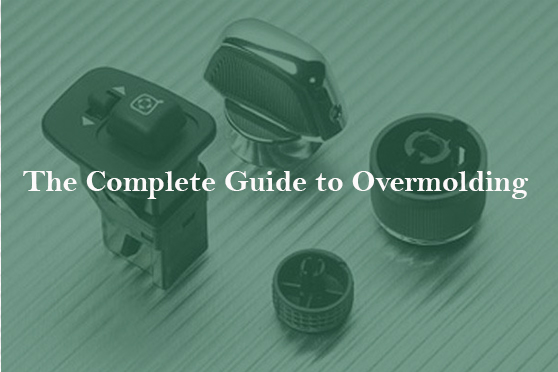What Is Overmolding?
Overmolding is a type of plastic injection molding. The process of combining two or more different materials into a single product. The most common over-molded products are toys, medical devices, and electronic components. This is achieved by applying a secondary injection molding process to the primary injection molded part.
There are two types of plastic injection molding:
-
Single-cavity
Makes one-cavity mold at a time
-
Multi-cavity
Makes more than one mold at a time.
This creates an integrated connection between the two materials that cannot be achieved with mechanical fastening methods alone.
There are two types of Over-molding:
-
Insert Molding
Involves merging a substrate with an over-molding material.
-
Sandwich Molding
Involves linking two substrates with an over-molding material in between them.
The Benefits Of Over-molding
Over-molding has many advantages compared to other manufacturing processes. It can be used to create complex shapes that would otherwise be difficult or impossible to create. It can also improve the strength and durability of the product. Additionally, over-molding can be used to add color and texture to the product.
-
Increased Strength and Durability
Over-molding can make products stronger than products made by other methods. Adding layers of material in the over-molding process makes the product more resistant to damage or breakage from drops, bumps, and other accidents, improving endurance.
-
Improved Aesthetics
Overmolding is a process that can be used to improve the aesthetics of a product. In over-molding, the material is cast onto another material. This can be done with different colors and material textures to achieve the desired effect.
Over-molding can be used to make the product look more finished and add ergonomic features. For example, over-molding can be used to create a soft-touch surface for frequently handled products. This makes the product more enjoyable to use and improves its overall appearance.
-
New functionality to a product
For example, over-molding can be used to add electrical components to products that previously had no electrical components. This opens up new possibilities for how the product can be used.
-
Enhanced Functionality
Over-molding can be used to add new functionality to your product. For example, over-molding can be used to add electrical components to products that previously had no electrical components. This opens up new possibilities for the use of the product.
-
Increased Productivity
If you're looking for ways to increase your productivity, over-molding may be the answer. Over-molding is a process you can use to improve your company's productivity. It can be used to boost the number of products produced per hour. Two injection molding processes can be performed simultaneously in one mold.
-
Reduced Costs
Combining the two processes allows us to use less material in both the original and over-molded products. Over-molding also allows us to produce more products per hour, reducing costs and increasing productivity and sales.
-
Improved Environmental Impact
Over-molding is a versatile manufacturing process that improves the environmental performance of your products. Over-molding can be used to recycle and/or reuse plastics collected through waste recycling programs and allows manufacturers to use more environmentally friendly materials.
This process can be used to reduce the amount of material used in a product or recycle waste into new products. Over-molding can also be used to create more durable and long-lasting products, reducing the need for alternative products and the associated environmental impact.
Things to consider when choosing overmolding
-
Machine selection
-
Material handling and preparation
-
State of the over-molding process
The Process Of Over-molding
Over-molding Applications
-
Horizontal
-
Vertical

